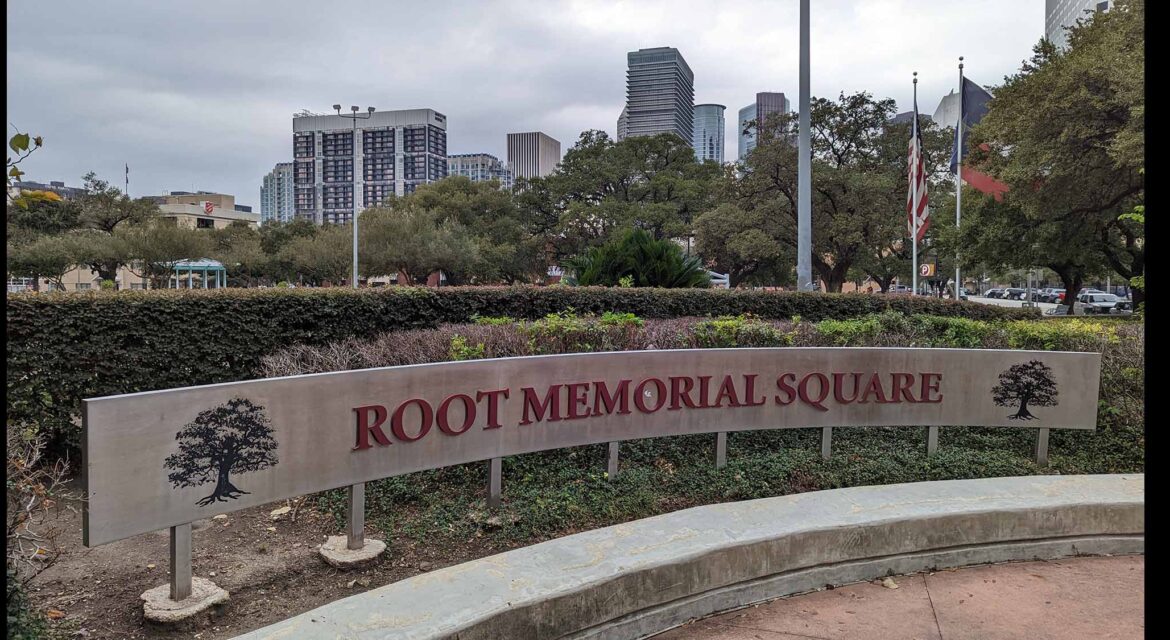 Taking up an entire city block, Root Memorial Square has become an essential element of the downtown community in Houston, Texas. With numerous features that have allowed it to become much more than a simple urban green space, the landmark highlights what sort of impact a monument can create for a community and an entire city.
Taking up an entire city block, Root Memorial Square has become an essential element of the downtown community in Houston, Texas. With numerous features that have allowed it to become much more than a simple urban green space, the landmark highlights what sort of impact a monument can create for a community and an entire city.

Dedicated to the City of Houston
 Donated to the City of Houston in 1923 by descendants of Alexander Porter Root and his wife, Laura Shepherd Root, Root Memorial Square occupies a prominent position in downtown Houston. A renovation in 2005 saw the addition of new sidewalks, civic art, new irrigation, the shade pavilion, a fountain and improved lighting.
Donated to the City of Houston in 1923 by descendants of Alexander Porter Root and his wife, Laura Shepherd Root, Root Memorial Square occupies a prominent position in downtown Houston. A renovation in 2005 saw the addition of new sidewalks, civic art, new irrigation, the shade pavilion, a fountain and improved lighting.
The Root Memorial Square basketball court has developed an identity all of its own, with a court that allows anyone to take a few shots, join in on a pick-up game or just to watch the action. Dedicated in 2005 as Lanier Court, the court is named in honor of Mayor Bob Lanier’s dedication to Houston and it’s citizens. It hosts community basketball games, festivals, and small pre- and post-event functions for the arena and nearby convention center. Other notable features include the fountain and metal markers that mimic the look of the city in the 1920s.
All of these features highlight what it can mean for a park to be so much more to a community and city. By creating distinct features that resonate with both residents and visitors, Root Memorial Square has become an important part of the community that has defined the present and future of an entire section of Houston.

In the Shadow of Houston’s Skyline
 Mentioned as an essential urban green space in the shadow of Houston’s skyline, Root Memorial Square was created to perpetuate the memory of two individuals but has become something much more for an entire community. In doing so, it highlights what is possible when a green space resonates with audiences across multiple eras.
Mentioned as an essential urban green space in the shadow of Houston’s skyline, Root Memorial Square was created to perpetuate the memory of two individuals but has become something much more for an entire community. In doing so, it highlights what is possible when a green space resonates with audiences across multiple eras.

